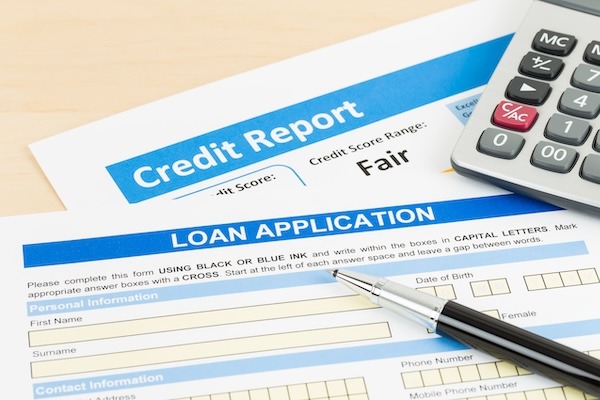5 Dangerous Financial Myths Holding Back Your Money Growth
Most of us believe at least one money myth without realizing it — a piece of “common wisdom” that quietly limits our personal finance growth. From...
Whether you're covering unexpected expenses, making a big purchase, or just need extra cash, our personal loans offer simple, flexible funding tailored to your needs.
Simplify your finances with a loan that combines multiple payments into one. Our consolidation loans help reduce stress and keep your budget on track.
Upgrade your living space with financing designed for renovations, repairs, or remodeling. Our home improvement loans help you enhance your home’s comfort, value, and functionality—on your terms.
Explore expert insights, financial tips, and strategic guidance from the Symple Lending team. Our insights and resource articles are your go-to source for empowering content that helps you make informed decisions on your journey to financial freedom.
Stay up-to-date with the latest press releases, media features, and major announcements from Symple Lending. This section showcases how we're making headlines and driving innovation in the lending industry.
5 min read
Breanne Neely : May 15, 2025 12:00:00 AM

Table of Contents
Did you know that borrowers who compare just three different loan offers save an average of $3,000 over the life of their loan? Yet surprisingly, nearly half of all borrowers accept the first loan offer they receive, potentially leaving thousands of dollars on the table.
Shopping for a loan doesn't have to feel overwhelming or confusing. Whether you're planning to buy a home, finance a car, or take out a personal loan, understanding how to effectively compare loan offers can put you in control of your financial future and help you secure the best possible terms for your situation.
Taking time to review different loan options can save you thousands over your loan term. When you get quotes from several lenders, you'll see firsthand how interest rates, fees, and terms can vary widely – even for the same type of loan. Without proper comparison, you might miss out on better rates or more suitable payment terms. The Consumer Financial Protection Bureau suggests reviewing multiple loan estimates as a key part of smart borrowing, especially for major purchases like homes.
Before you start comparing loan offers, take a look at your credit score. It plays a big role in what rates and terms lenders will offer you. You can check your score for free through many credit card companies or credit monitoring websites. The better your credit score, the better rates you'll likely receive. If your score needs work, consider paying down debt and fixing any credit report errors before applying – this could save you money through lower interest rates.
Before picking a loan, look at your monthly spending to know what payment you can handle comfortably. Start by listing all your regular bills - rent/mortgage, utilities, insurance, groceries, and other expenses. Then see what's left for a loan payment. Different loan budgeting calculators can help you test different payment amounts. Remember to leave room in your budget for savings and unexpected costs. What lenders offer might be more than what fits your monthly budget, so stick to an amount you can realistically manage.
The length of your loan directly affects how much you'll pay each month and over time. Short-term loans often mean higher monthly payments but less interest overall. With fixed rates, your payments stay the same, making budgeting easier. Variable rates might start lower but can change over time. Think about your long-term plans - if you're staying put for years, a fixed rate could be safer. If you plan to pay off the loan early, check for prepayment penalties. Be sure to thoroughly review and compare your loan offers so you can choose the best loan terms for your specific situation.
Getting loan quotes from three to five lenders helps you find the best deal. When asking for estimates, give each lender the same information about your income, social security number, and the amount you need to borrow. Make sure you're asking about the same type of loan to make comparisons meaningful.
Create a simple spreadsheet to track key details from each offer - including interest rates, monthly payments, and fees. This makes it easier to spot differences between lenders and find the most cost-effective option for your needs.
When looking at loan offers, you'll see both an interest rate and APR (Annual Percentage Rate). The interest rate shows what you'll pay to borrow the money, while APR gives you the total yearly cost including fees and other charges. APR makes it simpler to see the real cost when comparing personal loans.
Look at APRs on similar types of loans - for example, compare fixed-rate mortgages to other fixed-rate mortgages. Ask each lender if your rate is locked, since rates can shift before closing if they're not secured.
When looking at loan offers, consider all the extra costs beyond interest rates. Most loans come with origination fees (for processing the loan), application fees (to review your request), and third-party fees (like appraisals or title searches). Pay attention to prepayment penalties - these can cost you if you want to pay off your loan early. Some lenders might show lower interest rates but make up for it with higher fees, so look at the complete cost picture. A thorough review of multiple loan estimates helps you spot the truly affordable options.
Look at the monthly payment details in your loan estimates to see what you'll actually pay. These forms break down your costs into principal, interest, taxes, and insurance (if needed). If you're picking between fixed and adjustable rates, remember that variable payments can change over time - making budgeting trickier. Fixed payments stay the same, which helps with planning. Review your loan terms and use a payment calculator to test different loan amounts and terms. Make sure you factor in all costs to avoid payment surprises after signing.
Check your loan estimates carefully for upfront cash requirements. These documents list all the money you'll need when signing your loan agreement. Look for down payment amounts, closing costs, and any prepaid items like taxes or insurance. Some lenders offer credits that can lower your upfront costs. Ask about these options, but remember they might mean paying more over time through higher rates. Keep track of these numbers from each lender to find the option that fits your current savings.
Online calculators help you see how different loans stack up over time. Start by entering the loan amount, interest rate, and term length for each offer. Many tools show you both monthly payments and total interest costs side-by-side. The Consumer Financial Protection Bureau's rate tool lets you check typical rates in your area.
For example, if you're looking at a $200,000 loan, plug in different rates (like 6% vs 6.5%) and terms (15 vs 30 years) to see how small rate changes affect your costs. This makes it easier to find the loan that best fits your budget.
Look beyond just rates and fees when picking a lender. Read online reviews and check the Better Business Bureau ratings to learn from other borrowers' experiences. Pay attention to how loan officers respond to your questions - they should explain things clearly without rushing you. For home loans, ask about typical closing timeframes and how they handle delays. Good customer service matters, especially with long-term loans where you'll work with the lender for years. Some lenders might offer slightly higher rates but make up for it with better support and communication.
Having multiple loan offers gives you an advantage when talking to lenders. Show them competing loan estimates and ask if they can match better rates or fees from other lenders. Many will work with you, especially if you have good credit. You might get application fees waived, better interest rates, or improved payment terms. Be specific about what you want - like matching another lender's lower origination fee or interest rate. Some borrowers save hundreds or thousands by taking this extra step.
Before signing anything, read through all loan documents line by line. Pay special attention to the interest rate, payment terms, and any rate-lock details. If you spot differences between your final documents and what was initially offered, ask your lender about them right away. Taking time for this final review helps prevent costly surprises later.
After comparing your options, pick the loan that best fits your financial goals and budget. Make a list of documents the lender needs, including tax returns, bank statements, and pay stubs. Read through the final paperwork carefully - the interest rate, monthly payment, and loan term should match what you discussed. If anything looks different, ask your lender for clarification. Review your contract carefully before proceeding. Sign only when you're comfortable with all the terms and have double-checked the numbers. Your careful review of multiple offers will help you feel confident about your choice.
Remember that the lowest interest rate doesn't always mean the best deal. Consider the full picture – from monthly payments and total costs to customer service quality and lender reputation. Your careful comparison of multiple loan offers will pay off in both immediate savings and long-term financial benefits.
Take your time with this important decision, and don't feel pressured to accept an offer before you're ready. The extra effort you put into comparing loan offers now could save you thousands over the life of your loan and provide you with payment terms that better match your financial goals.
Disclaimer: The information provided in this blog post is for educational and informational purposes only and should not be considered as financial, legal, investment, or tax advice. Symple Lending is not responsible for any financial outcomes resulting from following the information or ideas shared in this blog. Every individual's financial situation is unique, and we strongly encourage readers to take their own circumstances into consideration and consult with a qualified financial, legal, tax, and investment advisor before making any financial decisions. Symple Lending does not provide financial, legal, tax, or investment advice.

Most of us believe at least one money myth without realizing it — a piece of “common wisdom” that quietly limits our personal finance growth. From...

Have you ever started the month with grand savings plans only to find your account balance exactly where you left it? You're facing a common...

Did you know that Americans collectively spend over $200 billion in credit card interest and fees annually? That’s because making minimum payments on...

Did you know that a personal loan could both hurt and help your credit score—sometimes simultaneously? While most borrowers worry about the negative...

Ever wondered why personal loans have become a financial lifeline for those navigating the unpredictable waters of midlife? Unlike the structured...

Did you know that 76% of personal loan applications are rejected simply because applicants don't meet basic eligibility requirements? This sobering...